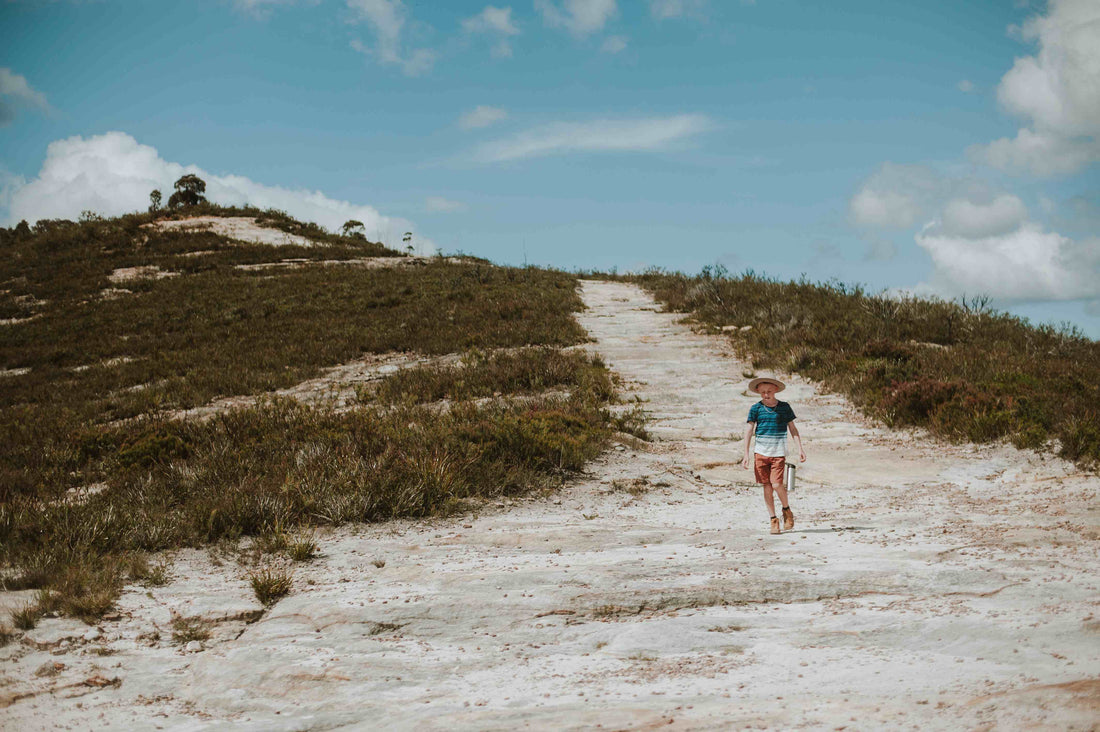
Essential Hiking Skills to Teach Kids
Share
Essential Hiking Skills Every Parent Should Teach Their Kids
There’s something pretty special about watching a child take to the trail — hopping over rocks, spotting animal tracks, and growing more sure of themselves with every hike. Hiking with kids isn’t just a way to get outside (though that’s a win in itself) — it’s a chance to pass on bush skills they’ll carry for life.
Whether your little adventurer is just starting out or already leading the way, here are the essential skills we think every kid should learn on the trail — taught gently, gradually, and always with encouragement.
1. Knowing How to Follow a Trail
Start simple: look for trail markers or signs together. Show them how to follow an obvious path and how to spot features like arrows, cairns, or coloured blazes. Let them lead short sections when it's safe to do so — they love the responsibility, and it's a great confidence booster.
Practice idea: Ask them to spot the next marker or describe the trail ahead.
2. Reading a Map (and Knowing Where They Are)
They don’t need full topographic map skills just yet, but helping them understand where they are — and where they’re going — gives kids a sense of spatial awareness and calm. Use simple trail maps and show landmarks like rivers, hills, or forks in the track.
Bring a highlighter or stickers to mark progress together on a printed map.
3. What To Do If They Get Lost
This is one of the most important skills — and one we hope they’ll never need. We teach kids the “STOP” rule:
- Stay where you are
- Think — don’t panic
- Observe — what can you see or hear?
- Plan — sit and wait for help
Make sure they know to stay put, make noise (whistle or shout), and that they should never keep walking to “find you.” It’s also good to remind them that they won’t get in trouble — they’ll just get found.
4. Basic Bush Hygiene and Safety
Simple but important lessons:
- Don’t drink from creeks unless an adult says it’s safe
- Always wash or sanitise hands before eating
- Watch out for stinging nettles, bull ants, and leeches (knowledge helps reduce fear!)
Let them help pack their own wipes, hand sanitiser, or small first aid bits — they’ll take more responsibility if it’s “theirs.”
5. Walking Smart (and Taking Breaks)
Pacing is a skill, not just a fitness thing. Teach them to find a steady rhythm, watch their footing, and take breaks before they’re exhausted. It’s also good to chat about managing elevation changes — slow and steady on the ups, careful on the downs.
We've been working on three-points-of-contact lately for steep and rocky sections of the trail.
6. Packing and Carrying Essentials
Even little hikers can carry something — their own water bottle, a small snack pouch, or a mini nature journal. As they grow, involve them in packing: what’s essential? What’s nice to have? What can stay behind?
Make it a game: “What three things do we always pack for safety?”
7. Communicating on the Trail
Kids should know how to:
- Call out if they need to stop
- Ask for help without fear
- Keep the group informed (“I’m tired,” “I need a drink,” “I saw something weird!”)
These are small things that make a big difference to group safety and morale.
Remind them it’s always okay to speak up — even if they think it’s silly.
8. Respecting Nature
This one’s at the heart of everything. Teach your kids to:
- Stay on the trail
- Leave plants, rocks, and animals where they are
- Carry out their rubbish (and bonus points for picking up other people’s)
It’s about raising hikers who care for the bush, not just enjoy it.
Make a checklist for “Leave No Trace” and turn it into a trail game.
Final Thoughts
You don’t need to teach everything at once — and not every lesson needs to feel like a lecture. These skills grow naturally with time, patience, and plenty of snacks. Every hike is a chance to learn, not just about the bush, but about themselves: their strength, their voice, and their place in the world.
And one day, they’ll be the ones guiding you along the trail — confidently pointing out markers, reminding you to drink water, and stopping to admire the view.